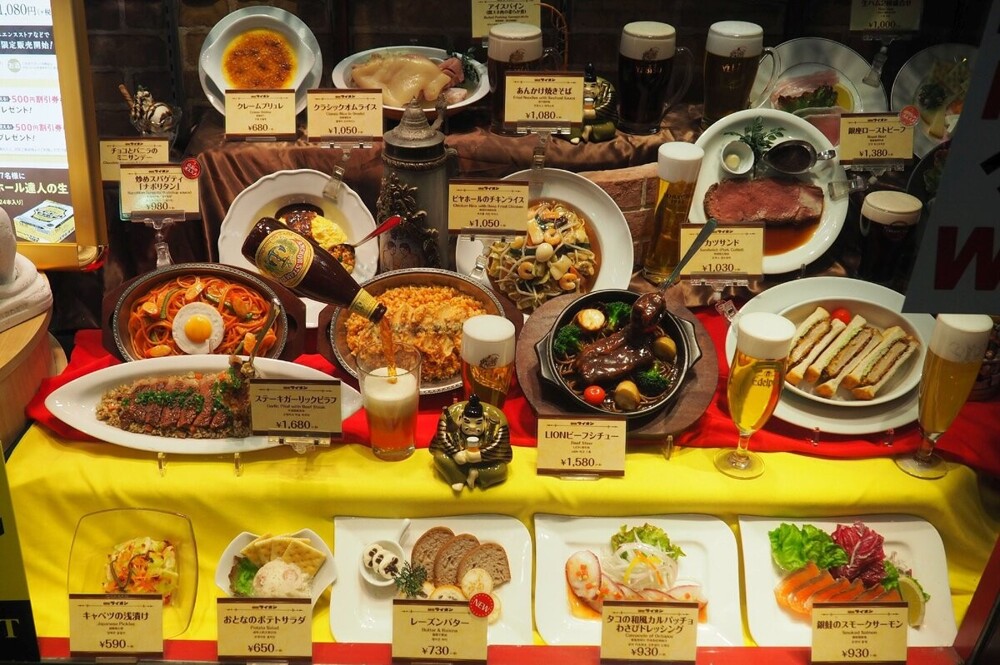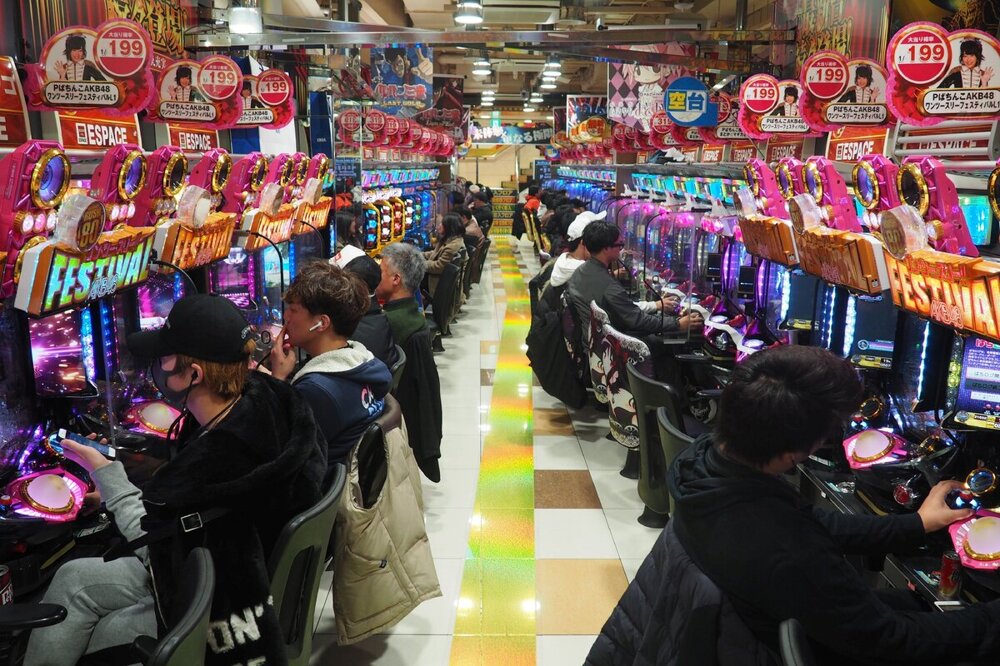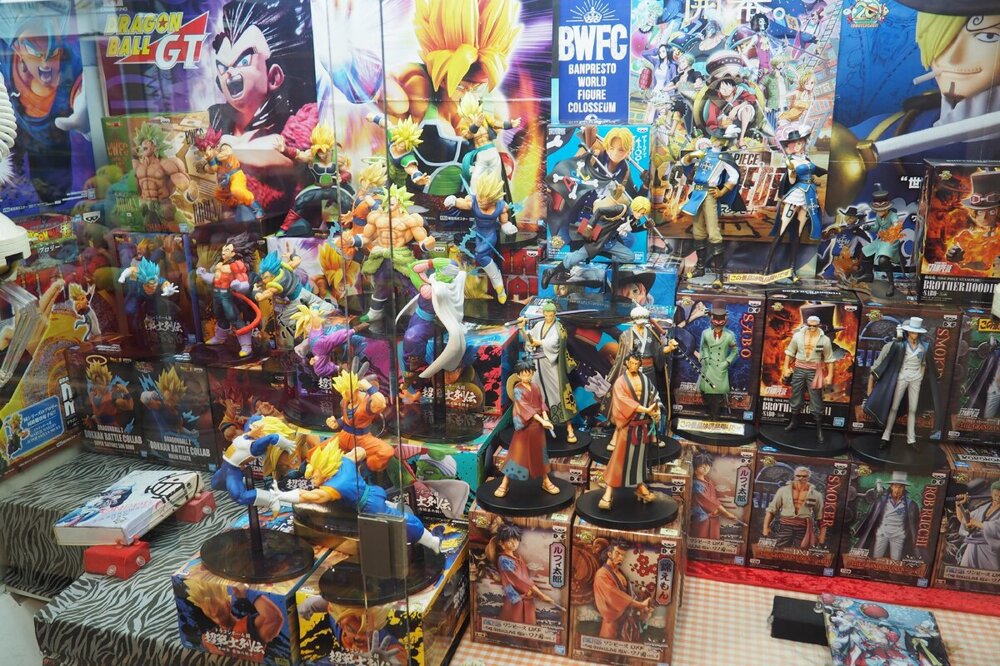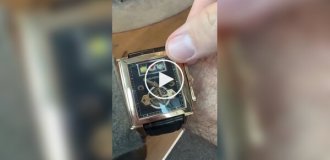10 common things in Japan that seem strange to us (12 photos)
Japan is often spoken of as a different planet, as something completely different from what we are used to. The explanation is partly the fact that for centuries Japan was closed from the outside world, which allowed the formation of a rather distinctive culture. 
There are, of course, many more interesting features in Japan than 10, but below I present exactly those that are especially striking and surprised me personally. So, let's go!
1. Food layouts 
Dozens of delicious plastic sushi
The first and perhaps the most noticeable feature that you notice on the very first day of your stay in Japan is the plastic food models. Such layouts decorate the windows of most Japanese restaurants, at least in city centers. Everything looks so natural that just looking at the most appetizing layouts makes your mouth water :) 
In fact, the food mockup industry in Japan dates back over 100 years. Despite the high cost of such plastic dishes, they pay for themselves quite quickly and today are already more of a status item. On my own behalf, I’ll add that in addition to the fact that the food layouts look really beautiful, it’s also very convenient. Before you go somewhere to eat, you know in advance what you can expect. And most importantly, the result will almost certainly correspond to what is shown on the display window!
2. Drink machines 
A vending machine with drinks in one of the alleys of Tokyo
Another very convenient and practical feature of the land of the rising sun and, unlike food layouts, has spread far beyond Japan. Several years ago, such vending machines with Japanese drinks appeared even in Moscow, but today they have either been replaced by ordinary vending machines with “international” drinks or have disappeared altogether.
If food models are distributed primarily in the center of large cities, then drink machines are installed literally everywhere in Japan: in small settlements, in parks, on the streets and alleys, in the subway, in the entrances of residential buildings and much more. Almost anywhere in Japan you can look around and there will be at least one machine gun in sight. Don't believe me? Just open a panorama of some street in Tokyo and see for yourself.
Drinks often cost around $0.80 (maximum $1.50 for large bottles) and, most importantly, drinks are available both hot and cold. I'm not even talking about the variety of Japanese tastes, drinks with jelly, and so on :) By the way, there are practically no vending machines with snacks (chocolates, cookies, chips), much more familiar to us, in Japan, but with drinks - on every corner.
3. Embankments. Or rather their absence 
Cozy promenade in Osaka)
This makes Japan the most different from any European country and, perhaps, from most countries in the world. We are accustomed to the fact that if a river flows through a city, there is often a pedestrian embankment along it, which is pleasant to stroll along. Well, if road or railway overpasses pass through the city, then, as a rule, they are located somewhere in industrial zones.
So in Japan everything is completely opposite. Here, overpasses are laid along and even over rivers. Rivers don't seem to be considered places to walk at all. Even if there is no overpass along it, then at least the back facades of houses or high fences will be close to the river, which also does not even imply the theoretical possibility of walking near the reservoir. There are exceptions, but they are very few.
4. Sidewalks. And yes, also their absence 
Street without sidewalks
Another interesting feature of urban design in Japan is the lack of sidewalks. Take a look for yourself: a simple street with houses, lampposts, trash cans and road signs, but without sidewalks, looks very unusual.
In reality, there are sidewalks in the country, but they are made only on the main streets of cities, but in residential areas, on narrow streets among residential buildings, they simply do not exist. Perhaps one of the reasons lies in the elementary savings in materials. However, if you're used toWhen you look at this feature, you realize that in fact little has changed. And in terms of safety, the pedestrian is also in no danger: the Japanese drive very politely and culturally, and fines for speeding in the country are very high, so no one will drive on the sidewalks here.
5. Capsule hotels 
Capsule hotel in Tokyo. Corridor for 40 capsules
Today, capsule hotels will surprise few people. In recent years, they have spread around the world in quite large numbers, but their origins are located precisely in Japan. Initially, they were intended for office employees who worked late and provided an opportunity to spend the night within walking distance from the office. Today, anyone can stay in a capsule, including tourists, because it is not only unusual, but also the cheapest way to spend the night in Japan.
What is a capsule hotel? As a rule, this is a long corridor, on both sides of which (sometimes only on one side) in two rows, above and below, there are sleeping capsules. The capsule is a kind of niche one meter by one meter and another two meters deep, i.e. actually one sleeping place. Naturally, a mattress, pillow and blanket are available. Moreover, capsules often even have a TV with headphones, otherwise if everyone watches it without them, the room will be very loud. In general, a capsule hotel is like a hostel, but with more privacy.
6. Onsens (Japanese baths) 
Onsen in one of the hotels
In Japan, onsens (local baths) have become a real cultural phenomenon. In the traditional sense, onsens are natural hot springs, but in the modern sense they are considered all baths, including those located in the center of large cities.
The rules for visiting onsen are quite interesting: at the entrance you will be given a special suit (a simplified kimono) to go directly to the bath area. There you will undress and leave your things in a special personal locker. Next, you will need to wash yourself (soap, shower gel and shampoo are freely available here), and only then take hot baths clean. In general, combine business with pleasure.
P.S. By the way, during my trip to Japan I stayed exclusively in capsule hotels with onsen. I tried to absorb the local culture as much as possible :)
7. Unnecessary professions 
Three people control the exit from the parking lot of a shopping center
There are certainly no other countries in the world with such a number of unnecessary professions as in Japan. Here everyone is involved, everyone makes their contribution. Even for those situations that seem familiar to us and do not require specialized assistance, a special worker is allocated here.
Here are just a few examples. In the photo above, three(!) people are controlling one of the exits from the underground parking lot of the shopping center. If repair/construction work is going on somewhere on the street, then one of the workers in the team will simply hold a warning sign. Something like the word Repair and an arrow indicating a detour. At a Japanese airport there will almost certainly be a person standing in one place and indicating with his hand where to go. Another airport worker will place the suitcases evenly on the belt.
And there are a lot of such examples! They may seem funny to us, but who knows, maybe these are small bricks in the thriving Japanese economy, and it is thanks to such seemingly unnecessary professions that a decent standard of living is ensured.
8. Slot machines 
Arcade in Japan
Yes, slot machines exist in many countries, but it seems that only in Japan they are a full-fledged business industry. In many cities there are huge, multi-story gaming centers with hundreds of slot machines for every taste and color. And most importantly, there is often no crowd inside, and the number of children among the visitors is very small; the majority are quite respectable people.
Someone tries to pull out a toy (well, we have similar machines at the entrance to many supermarkets), someone dances or plays a musical instrument, someone performs some unique set of movements. In general, the popularity of slot machines in Japan shows no signs of slowing down. P.S. Everyone remembers the Sega game consoles, right? Where are they today? So in Japan, Sega owns several mega-popular gaming centers. This is what it means to re-profile in time :)
9. Pachinko 
Pachinko parlor, Tokyo
On the one hand, this point is a continuation of the previous one, but on the other, given the enormous popularity of pachinko and its special surroundings, we will highlight it as a separate one. What is pachinko? This is a traditional Japanese slot machine for playing for money. More precisely, not entirely for money (after all, gambling is prohibited in Japan), but for metal balls, but these balls are freely bought and sold, so in the end the game is still played for money.
I will not go into the rules of pachinko (they are quite simple and easy to find on the Internet), I will only tell you about the gaming halls themselves. As a rule, this is a fairly large room for 200-300 cars with several long aisles with machines on the sides. Two things distinguish them from ordinary arcades with slot machines. Firstly, the music from the machines screams so loudly that it starts to ring in your ears. And, secondly, it’s so smoky here that you could hang an ax. Together, these two factors create a kind of zombifying effect.
Both young and old, fairly simple-looking people and white-collar workers play in a natural way. And while some sit quite relaxed, others, it seems, are immersed directly in these machines. It is no coincidence that pachinko is addictive and sometimes leads to rather sad consequences.
10. Manga 
Manga figurines store
Another characteristic Japanese feature that has gone far beyond the country’s borders. But neither in scope nor in its popularity abroad does manga come close to what can be seen in Japan. It's a real cult here. Literally the entire country is engrossed in comics that are primitive at first glance (and, frankly speaking, at second glance too). It even seems that more people read manga on the subway than use their smartphones.
During my trip to Japan, I did not come across a single traditional bookstore, but I saw dozens of manga stores. People walk, choose, and stop for a long time at the shelves. The lives of manga characters have been followed for many years, and the Japanese even try to copy the appearance of many of them. Cosplay is also a purely Japanese invention. Well, what, you changed into a Pikachu costume, and now it’s as if superpowers are starting to emerge in you :)





















